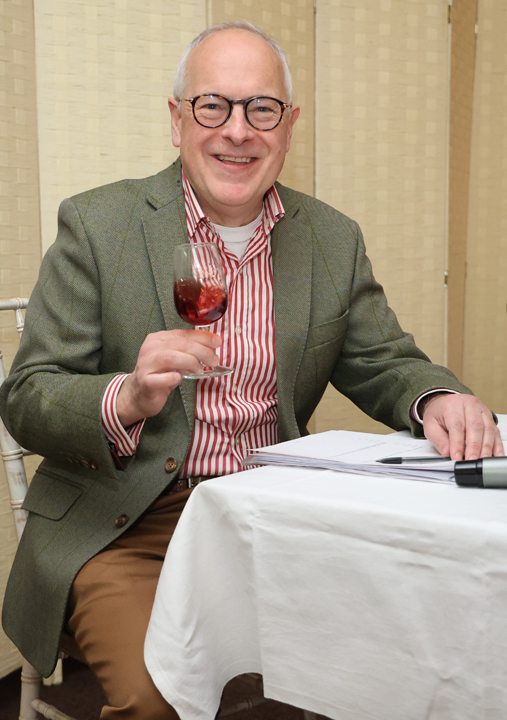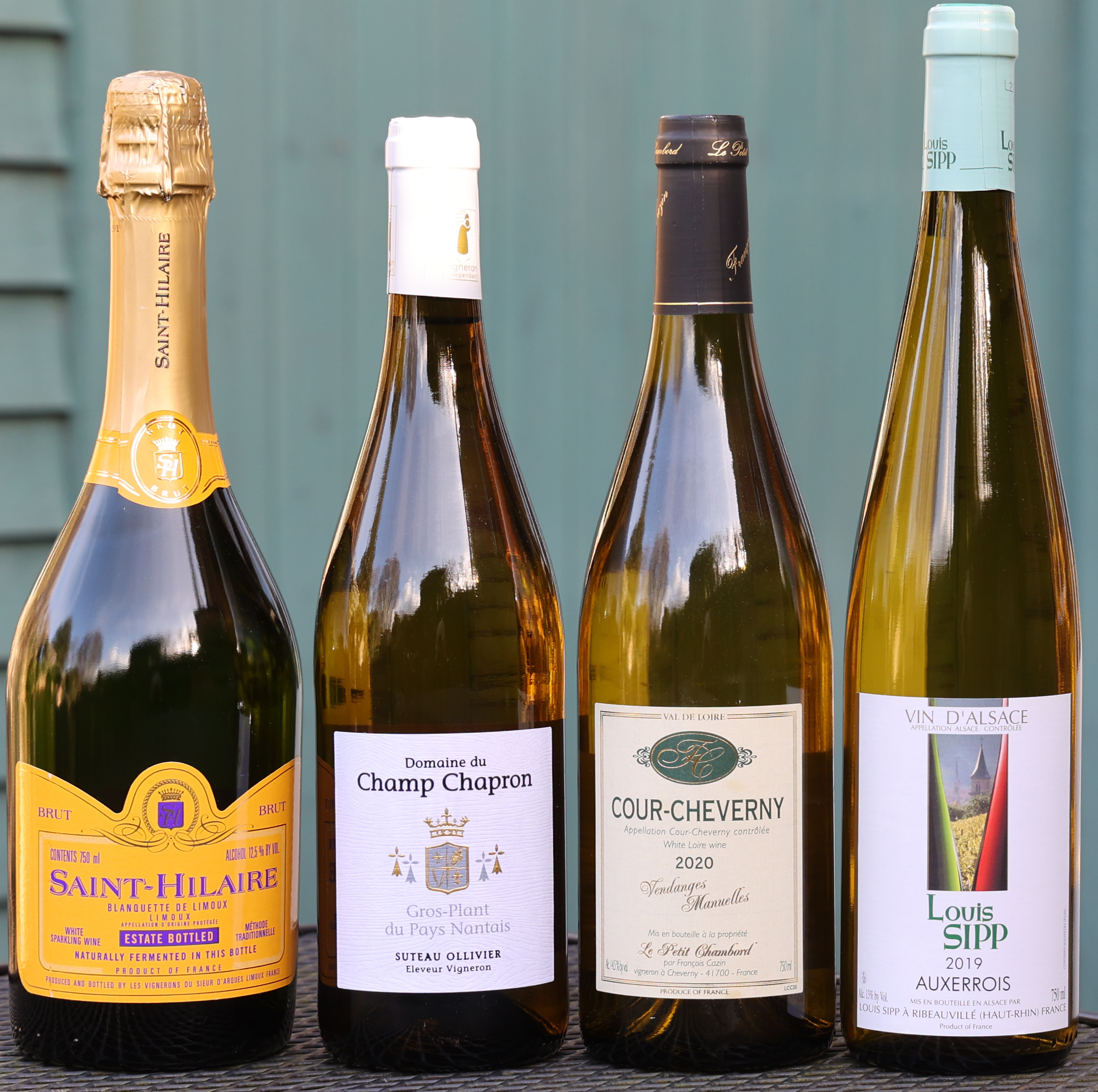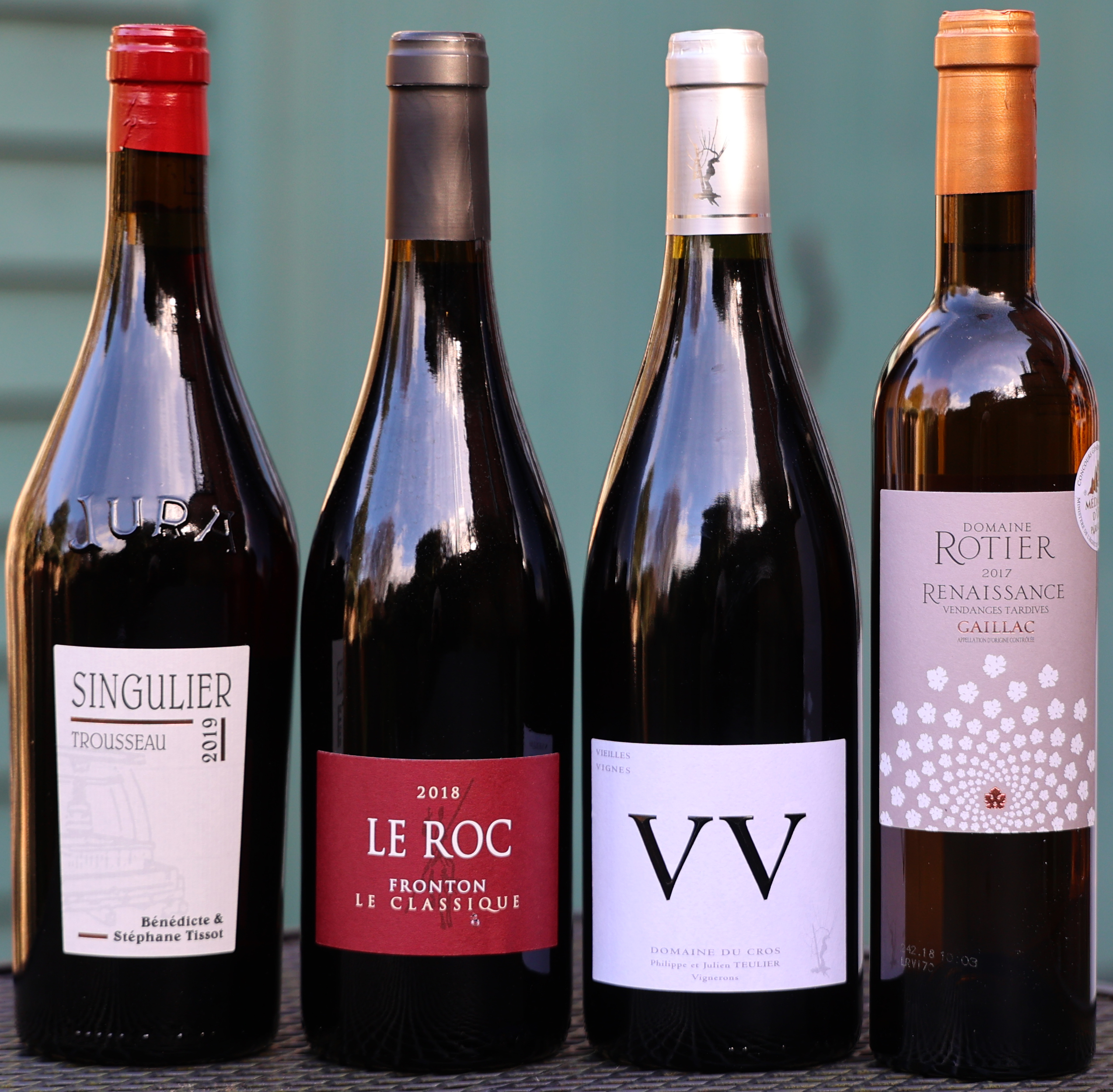 On 26 January 2023, Jonathan Pedley MW came to waken members of the Club from their Christmas hibernation. For him, as he said, it was a great pleasure to be back to face-to-face tastings after the remote tastings of the Covid period.
On 26 January 2023, Jonathan Pedley MW came to waken members of the Club from their Christmas hibernation. For him, as he said, it was a great pleasure to be back to face-to-face tastings after the remote tastings of the Covid period.
Jonathan is now (re)-trimmed, his daughter having insisted that the Old Testament Prophet hair and beard had to go, but the cutting of the locks had no Samson effect. This was Jonathan at his best – fascinating wines, glorious insults, deep knowledge, effortless ability to communicate. As Hilary Reid Evans said in her closing vote of thanks, with Jonathan you can never forget (and never should forget) the sheer fun of wine.
This tasting of ‘Unusual French Varieties’ was in essence a clockwise circumnavigation of France – from Limoux at 6pm on the clock, round through the Loire (11 am), Alsace (1 pm), the Jura (3 pm) and back down to the South-West (7.30 pm) to finish. There was praise for the Wine Society (‘not just about claret for retired lawyers’) and the Caves de Pyrène (‘fabulous oddities’); and for the Jancis/Julia/José monster tome, the ‘bible’ of wine grapes, as well as Steven Spurrier’s now long out of print French Country Wines (1984).
First up (‘to enable us to get through the parish notices’) was the ‘St Hilaire’ Blanquette de Limoux (£9.50 from Tesco). Yes, the Limousins have been making sparkling wine for a long while but no, they didn’t teach Dom Perignon the secrets of the trade. Cremant de Limoux is 100% Chardonnay but the Blanquette is 95% Mauzac with a touch of Chenin in the mix. Mauzac is an autochthonous grape – meaning no obvious relation to anyone or anything else in the worldwide viticultural family – found pretty much only in the Limoux area (though there’s a bit in nearby Gaillac).Fresh, clean and light with a touch of complexity on the nose thanks to 12 months on the lees) but no yeast influence in the mouth, just a touch of citrus. Jonathan doesn’t buy the ‘Mauzac = apples’ trope – but not every table was with him here.
Tesco). Yes, the Limousins have been making sparkling wine for a long while but no, they didn’t teach Dom Perignon the secrets of the trade. Cremant de Limoux is 100% Chardonnay but the Blanquette is 95% Mauzac with a touch of Chenin in the mix. Mauzac is an autochthonous grape – meaning no obvious relation to anyone or anything else in the worldwide viticultural family – found pretty much only in the Limoux area (though there’s a bit in nearby Gaillac).Fresh, clean and light with a touch of complexity on the nose thanks to 12 months on the lees) but no yeast influence in the mouth, just a touch of citrus. Jonathan doesn’t buy the ‘Mauzac = apples’ trope – but not every table was with him here.
Second came Gros Plant du Pays Nantais, aka Folle Blanche, under which name it was dominant in pre-phylloxera days down the Atlantic coast of France. The problem was that it grafted badly to the American rootstocks used to fight off the phylloxera bug and so other vines got the nod. Gros Plant is now behind Muscadet in the Loire – and not having the best of times. It’s early budding so hard hit by the late frosts now plaguing French vineyards in these days of climate change. In five of the last seven years there have been major losses for producers. Nor has a reputation for making wines that ‘no-one in their right mind’ would dare to drink helped. But … not so here. This was beautifully fresh and clean, lots of Grannie Smith apple influence and a touch of sur lie yeastiness. All we needed – but didn’t have – were oysters and shellfish… Domaine de Champ Chapron 2021, £10.90 from www.madeinlittlefrance.co.uk.
Wine no 3 – again from the Loire - was Romorantin, Cour-Cheverny 2020 (£12.95 from the Wine Society). Legend has it that the Romorantin vine was brought to Cour-Cheverny by Francois I around the turn of the 16th century but DNA analysis shows it to be yet another Chardonnay sibling – linked to Gouais Blanc and Pinot Teinturier. It is thought to be a natural cross. Cour-Cheverny has 73 hectares of Romorantin – and that’s about the sum total in the world! A shame on this showing… Those members who had drunk Romorantin in days past were very pleasantly surprised by its complexity (probably helped by old vines and some ageing in wooden vats sur lie), its richness (warm summers and modern viticulture bringing out the flavour and pushing up the alcohol to a well-balanced 14.5%) and its generous nose of melon, yellow plum and a touch of vanilla. Criticism? Very little – perhaps a tad ‘soft’.
Next up was Louis Sipp’s 2019 Auxerrois from Alsace (£10.95 from the Wine Soc). Not really obscure, said Jonathan, with around 3200 hectares of planning, but sometimes bottled as or blended with Pinot Blanc. In the mid-1980s everyone in the wine trade adored Alsace but now it’s rather different. Star producers can charge fabulous prices; the rest not so – and the (lack of) appellation rules and the labelling system makes working out sugar levels very tricky. This wine was off-dry (even verging on demi-sec) but if you didn’t know you could go very wrong on food matching. In the fine wine stakes, top flight German Trocken Rieslings offer ‘spectacular quality’ in Jonathan’s opinion – much better than high-end Burgundy. That said, this particular wine was a rare treat. 100% Auxerrois, rich, juicy, a nose of ripe melon and Golden Delicious – not huge length but a pleasure to drink.
 Wine no 5 was many members’ pick of the night. This was Domaine Tissot’s Trousseau ‘Singulier’ 2019 from the Arbois appellation in the Jura. Not cheap at £32 (Wine Society) but there’s a gorgeous floral / rose petal nose with red currant and red cherry in there too. Light colour with a touch of brown / garnet, excellent intensity and acidity and fairly light tannins. Trousseau, also known as Bastardo in Portugal, is part of the Salvanien family. It’s not easy to grow; another early budder but also prone to grey rot – and in 2021 frosts did a great deal of damage to the few producers. In good summers it can get to fairly high sugar levels, thus explaining the 14% alcohol. But these problems go a long way towards explaining its now small representation in the Jura – at less than 200 hectares that’s under 5% of total Jura production. So buy a bottle or three from the Wine Society and help keep it alive. Another Arbois option well worth trying in Jonathan’s view is the Poulsard rosé, which the Oxford Wine Company stock.
Wine no 5 was many members’ pick of the night. This was Domaine Tissot’s Trousseau ‘Singulier’ 2019 from the Arbois appellation in the Jura. Not cheap at £32 (Wine Society) but there’s a gorgeous floral / rose petal nose with red currant and red cherry in there too. Light colour with a touch of brown / garnet, excellent intensity and acidity and fairly light tannins. Trousseau, also known as Bastardo in Portugal, is part of the Salvanien family. It’s not easy to grow; another early budder but also prone to grey rot – and in 2021 frosts did a great deal of damage to the few producers. In good summers it can get to fairly high sugar levels, thus explaining the 14% alcohol. But these problems go a long way towards explaining its now small representation in the Jura – at less than 200 hectares that’s under 5% of total Jura production. So buy a bottle or three from the Wine Society and help keep it alive. Another Arbois option well worth trying in Jonathan’s view is the Poulsard rosé, which the Oxford Wine Company stock.
With no 6 we switched towards the bigger, blacker category of reds. The original Negrette was supposedly brought back from the Holy Land by Count Raymond of Toulouse in crusading times but DNA analysis says it’s actually part of the Malbec / Cot family so probably local to Toulouse and the nearby Fronton appellation. 100% Negrette is now pretty rare and this fine example of Domaine Roc’s 2018 vintage (Caves de Pyrène, £12.95) had 20% Syrah and 10% Cab Sauv in the mix to give a supple, perfumed wine with decent weight, rich jammy fruit and supple tannins – no ‘desiccated grocers’ claret’ this one. In the post-match show of hands it came out as second only to the Trousseau and just ahead of the Romorantin.
Then came the ‘proper dog-strangler’ for those who really like their wines big and black. Fer, the last of the red varieties of the tasting, is another autochthonous variety (though it may be an ancestor of Carmenère). It goes under a lot of different names such as Servadou and Pinec and some speculate that the ‘Fer’ name refers to iron in the soil (or the wine) but it’s more likely a reference to its wild – ie ‘feral’ origins. There are still some 1600 hectares in France but it’s really only in the spectacular beauty of the terraced ampitheatre that forms the Marcillac appellation that it’s used unblended. With pruce and tar on the nose and rich dark fruits on the palate with a strong tannic grip, the wine lived up Jonathan’s ‘dog strangler’ epithet. Old vines add character and complexity to this example, which has a 35 day maceration period and 18 months in oak foudres – but it divided opinion in the room, that’s for sure. Domaine du Cros ‘Cuvée VV’ 2019, £18.40 from Caves de Pyrène.
Last up was the ‘Renaissance’ Vendanges Tardives Loin de l’Oeil from Gaillac where it grows side by side with Mauzac (thus closing the circle of our tasting). Around 640 hectares are grown in the Tarn. The name ‘Far from the eye’ may come from the lengthy distance (for vines) between bunch to flower but who can say for sure. What you can say – and our members wholeheartedly did say – was that this was just beautiful. Lovely golden colour, lots of botrytis, fresh and fragrant and without that waxy note that denotes Semillon in the mix. A perfect alternative to Sauternes! 2017 was a dry summer with a little early September rain as a bonus and noble rot starting by late September. Slow fermentation produced a wine with 12% alcohol, some 190 grams of residual sugar and lovely stuff at a very good price (£16.50 from the Wine Society).
Thanking Jonathan at the end of the tasting Hilary was succinct. ‘You bring back the fun … and we love you for it!’
GH: 28/1/23